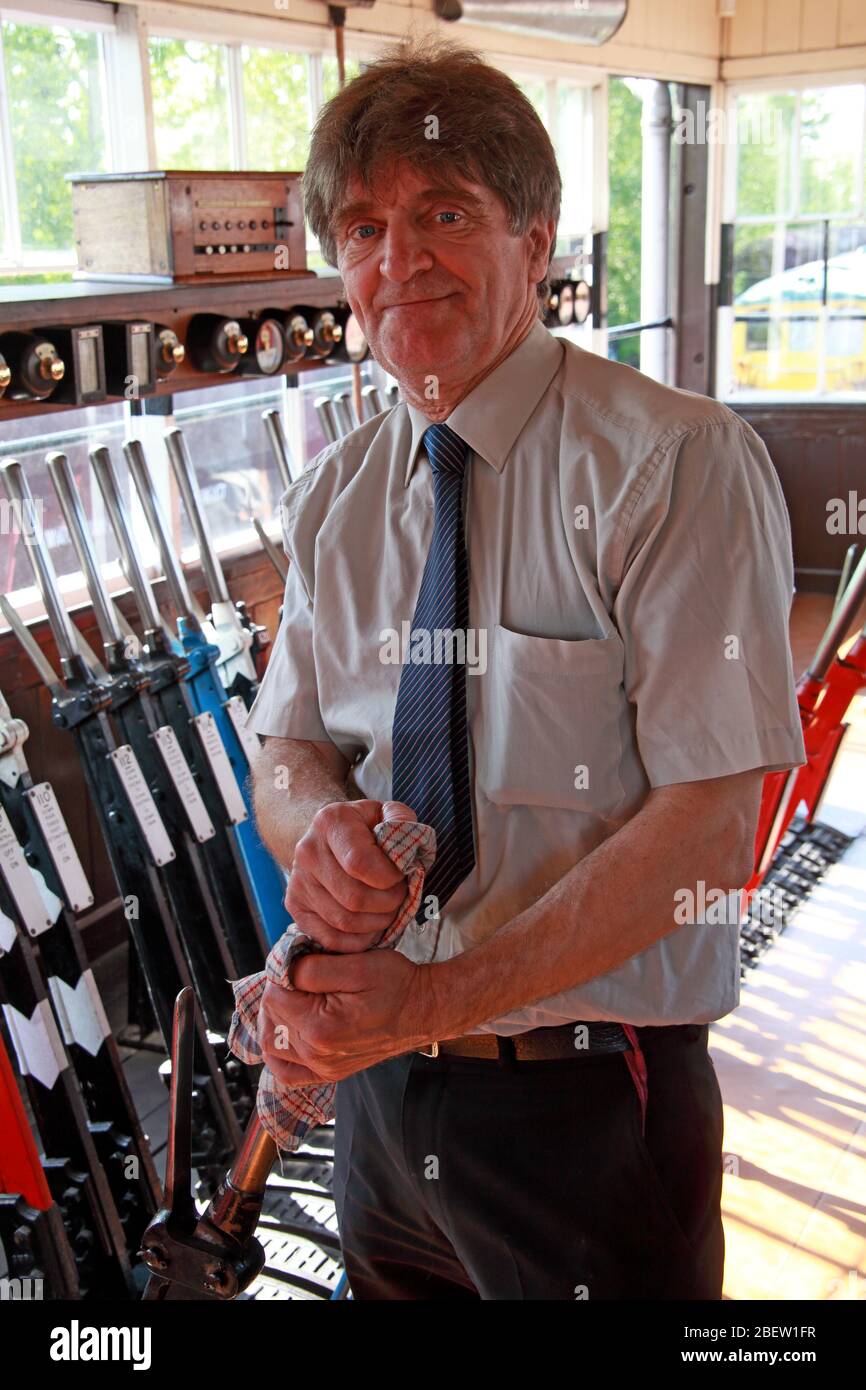Working signalman in a 1950's style signal box, British Rail, Cheshire, England, UK, pulling levers

Image details
Contributor:
Tony Smith / Alamy Stock PhotoImage ID:
2BEW1FRFile size:
60.2 MB (1.6 MB Compressed download)Releases:
Model - no | Property - noDo I need a release?Dimensions:
3744 x 5616 px | 31.7 x 47.5 cm | 12.5 x 18.7 inches | 300dpiDate taken:
24 April 2011Location:
Vernon Way, Crewe CW1 2DBMore information:
A signalman or signaller is an employee of a railway transport network who operates the points and signals from a signal box in order to control the movement of trains. Contents The first signalmen, originally called Railway Policemen (leading to the nickname of 'Bobby'), were employed in the early 19th century and used flags to communicate with each other and train drivers, and hourglasses for the purpose of Time Interval Working between stations. Additional duties It was a signalman's duty to check each train that passed their signal box, looking for the red tail lamp exhibited on the trailing vehicle, the sighting of which confirmed that the train was still complete, and thus the section was clear. Each train movement was logged, by hand, in a Train Register Book, and it was normal practice to provide a special desk to support this sizeable book. As well as train movements, every communication between signalmen and adjacent signal boxes via bell codes (when accepting trains or dealing with a token) was logged. Technological advances including mechanical fixed signals in the 1840s, the electric telegraph and block working in the 1850s, and proper mechanical interlocking from 1856, allowed safer, more expeditious train working, and more complicated track layouts to be controlled single-handedly. The advent of such technological advances gradually led to the provision of an enclosed workspace known as a signal box, signal cabin or interlocking tower. The principles of British-style railway signalling have changed little since the Victorian era and early 20th century. Modern technology has generally reduced the labour required per train movement. In many cases, a switch, button or computer command is used to alter the lie of points and control signals. Although many classic mechanical signal boxes remain in use, these are gradually being replaced by modern power signalling systems on most railways. The heartlands of British-style railway signalling could be said